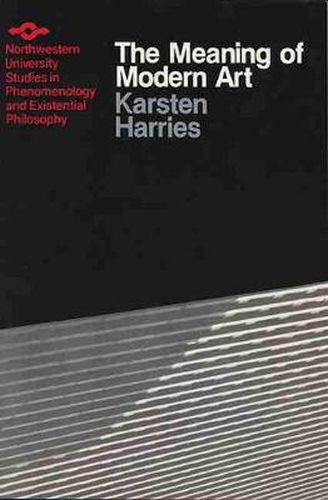Readings Newsletter
Become a Readings Member to make your shopping experience even easier.
Sign in or sign up for free!
You’re not far away from qualifying for FREE standard shipping within Australia
You’ve qualified for FREE standard shipping within Australia
The cart is loading…






That modern art is different from earlier art is so obvious as to be hardly worth mentioning. Yet there is little agreement as to the meaning or the importance of this difference. Indeed, contemporary aestheticians, especially, seem to feel that modern art does not depart in any essential way from the art of the past. One reason for this view is that, with the exception of Marxism, the leading philosophical schools today are ahistorical in orientation. This is as true of phenomenology and existentialism as it is of contemporary analytic philosophy. As a result there have been few attempts by philosophers to understand the meaning of the history of art–an understanding fundamental to any grasp of the difference between modern art and its predecessors. Art expresses an ideal image of man, and an essential part of understanding the meaning of a work of art is understanding this image. When the ideal image changes, art, too, must change. It is thus possible to look at the emergence of modern art as a function of the disintegration of the Platonic-Christian conception of man. The artist no longer has an obvious, generally accepted route to follow. One sign of this is that there is no one style today comparable to Romanesque, Gothic, Renaissance, or Baroque. This lack of direction has given the artist a new freedom. Today there is a great variety of answers to the question, What is art? Such variety, however, betrays an uncertainty about the meaning of art. An uneasiness about the meaning of art has led modern artists to enter into dialogue with art historians, psychologists and philosophers. Perhaps this interpretation can contribute to that dialogue.
$9.00 standard shipping within Australia
FREE standard shipping within Australia for orders over $100.00
Express & International shipping calculated at checkout
That modern art is different from earlier art is so obvious as to be hardly worth mentioning. Yet there is little agreement as to the meaning or the importance of this difference. Indeed, contemporary aestheticians, especially, seem to feel that modern art does not depart in any essential way from the art of the past. One reason for this view is that, with the exception of Marxism, the leading philosophical schools today are ahistorical in orientation. This is as true of phenomenology and existentialism as it is of contemporary analytic philosophy. As a result there have been few attempts by philosophers to understand the meaning of the history of art–an understanding fundamental to any grasp of the difference between modern art and its predecessors. Art expresses an ideal image of man, and an essential part of understanding the meaning of a work of art is understanding this image. When the ideal image changes, art, too, must change. It is thus possible to look at the emergence of modern art as a function of the disintegration of the Platonic-Christian conception of man. The artist no longer has an obvious, generally accepted route to follow. One sign of this is that there is no one style today comparable to Romanesque, Gothic, Renaissance, or Baroque. This lack of direction has given the artist a new freedom. Today there is a great variety of answers to the question, What is art? Such variety, however, betrays an uncertainty about the meaning of art. An uneasiness about the meaning of art has led modern artists to enter into dialogue with art historians, psychologists and philosophers. Perhaps this interpretation can contribute to that dialogue.